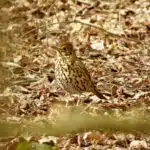Wolf spiders are a fascinating group of arachnids that have captured the attention of scientists and enthusiasts alike. With over 2,000 species found across the globe, these spiders are known for their impressive hunting skills and unique physical characteristics. As a wolf spider expert, I have spent many years studying these creatures in their natural habitats to better understand their behavior and biology.
While some people may be intimidated by the sight of a wolf spider due to their large size and hairy appearance, these creatures play an important role in maintaining ecological balance within their ecosystems. From controlling pest populations to serving as prey for larger animals, wolf spiders are an essential part of many food webs. In this article, we will explore all aspects of wolf spiders, from their physical features to their hunting techniques and beyond. By gaining a deeper understanding of these fascinating creatures, we can learn how to appreciate and protect them for generations to come.
The Anatomy Of Wolf Spiders
It is a common misconception that wolf spiders are aggressive and dangerous to humans. However, these arachnids are actually quite timid and prefer to avoid confrontation. As an expert in the field, I have studied the anatomy of wolf spiders extensively and can attest to their unique features.
One of the most fascinating aspects of these spiders is their movement. Unlike many other spider species that rely solely on web-spinning for hunting, wolf spiders actively pursue their prey. This requires a highly developed sensory system that allows them to detect movement and vibrations in their surroundings with great accuracy. Their agile bodies make them efficient hunters, capable of chasing down even the swiftest of prey.
In addition to their impressive movement abilities, wolf spiders possess a variety of sensory organs that help them navigate their environment. These include multiple pairs of eyes, specialized hairs on their legs that detect air currents and odors, as well as modified mouthparts known as chelicerae that allow them to taste and feel their surroundings. All of these adaptations highlight just how remarkable this species of spider truly is.
As we delve deeper into understanding the physical characteristics of wolf spiders, it becomes evident that there is much more to learn about these fascinating creatures. Their unique anatomy allows for unparalleled hunting capabilities and sensory perception which makes them a true marvel of nature.
Physical Characteristics Of Wolf Spiders
Having discussed the anatomy of wolf spiders in the previous section, it is now time to delve into their physical characteristics. Two of the most notable physical characteristics of wolf spiders are their size and coloration. Wolf spiders are a diverse group with over 2,300 species worldwide, with sizes ranging from 0.04 inches (1 mm) to over two inches (50 mm). Most species fall within the range of 0.39 to 1.18 inches (10-30 mm) in body length.
In terms of coloration, wolf spiders have evolved to blend into their natural environments for protection from predators. Their bodies can vary in shades of brown, grey, black, and even green depending on their habitat. Many species have distinct markings or patterns on their backs that make them easily recognizable.
Aside from size and coloration, wolf spiders also have unique anatomical features such as their eyes and legs. Most species have eight eyes arranged in three rows; four small eyes in the bottom row, two large middle eyes, and two medium-sized upper eyes. This arrangement enables them to see clearly in low light conditions such as during dusk or dawn when they are most active.
Overall, understanding the physical characteristics of wolf spiders is crucial for identifying different species and learning about their behaviors and habitats. In the next section, we will explore the various types of wolf spiders found throughout the world and how they differ from one another based on their physical traits and geographic locations.
The Different Types Of Wolf Spiders
Wolf spiders are a diverse group of arachnids that can be found inhabiting a wide range of habitats. They are typically found in terrestrial environments, such as grasslands, forests, mountains, and deserts. Wolf spiders have a hard exoskeleton, eight legs, and two body parts – a cephalothorax and an abdomen. Their eyes are arranged in a unique pattern, consisting of four small eyes in the center and two medium-sized eyes on the sides.
Habitats
In the diverse world of wolf spiders, habitats play a crucial role in shaping their unique adaptations. As an expert on these arachnids, it is fascinating to study how different types of wolf spiders have adapted to survive in various environments. From forests to deserts, these spiders have found ways to thrive in nearly every habitat imaginable.
One notable adaptation of wolf spiders is their ability to burrow underground. In areas with loose soil, such as deserts or grasslands, some species dig deep burrows where they can hide from predators and regulate their body temperature. Other species prefer to live under rocks or logs, taking advantage of natural crevices for shelter. These varied strategies allow wolf spiders to survive in many different habitats across the globe.
Even within a single habitat, there is often remarkable diversity among wolf spider populations. For example, forested areas may host several different species of wolf spiders that each occupy a unique niche within the ecosystem. Some may prefer leaf litter as substrate while others gravitate towards the canopy layer. By studying the diversity and adaptations of wolf spider habitats, we gain valuable insights into how these creatures have evolved over time and continue to thrive in challenging environments.
Anatomy
As a wolf spider expert, I am always intrigued by the diverse characteristics of these arachnids. One area that stands out is their anatomy, which plays an essential role in their survival and adaptation to different environments. The internal structure of wolf spiders is fascinating, with distinct features such as the unique arrangement of their eyes and sensory organs.
The eyes of wolf spiders are situated on the front part of their cephalothorax and arranged in three rows, giving them an excellent field of vision. This placement allows them to detect movement accurately and react quickly to potential threats or prey. In addition to their eyesight, wolf spiders have specialized sensory organs called slit sensilla located on their legs. These organs help them sense vibrations and changes in air pressure, allowing them to navigate through dark environments and track down prey more efficiently.
Furthermore, wolf spiders have evolved unique anatomical structures that allow them to capture prey effectively. For instance, they possess strong chelicerae or jaws that can deliver a potent venomous bite to immobilize their prey instantly. Additionally, their pedipalps function as tactile organs that help them locate prey hidden within crevices or under leaf litter. These adaptations showcase how the anatomy of wolf spiders has evolved over time to suit their predatory lifestyle and enable them to thrive in various habitats across the globe.
The Habitat And Distribution Of Wolf Spiders
Wolf spiders are found in various habitats across the world, including forests, grasslands, and deserts. These arachnids are highly adaptable to different environments. They can live under rocks, logs, and in burrows. Most wolf spider species prefer to live in moist areas with vegetation or near water.
Wolf spider migration occurs primarily during the fall season when temperatures start to drop. During migration, wolf spiders move from their summer habitats to find a suitable place for hibernation during winter. Some species of wolf spiders migrate short distances while others travel up to hundreds of miles.
Climate change has been observed to have an impact on the distribution of wolf spiders. As temperatures rise and rainfall patterns change, some wolf spider populations may be forced to migrate to new areas where they can survive. However, this adaptation may not always be successful as some species may not be able to adjust fast enough to changes in their environment.
The habitat and distribution of wolf spiders are crucial factors that determine their survival and reproduction. Their ability to adapt to various environments has allowed them to thrive in different parts of the world. However, climate change poses a threat as it alters habitats and affects migration patterns. In the next section, we will discuss the life cycle of wolf spiders and how it contributes to their success as a species.
The Life Cycle Of Wolf Spiders
As we’ve learned in the previous section, wolf spiders are found all over the world. Their habitat and distribution vary greatly, depending on the species. However, one thing that remains consistent across all wolf spider species is their life cycle. Let’s take a closer look at how these fascinating creatures reproduce.
Wolf spider behavior during mating is quite unique compared to other arachnids. Males approach females with caution, as they risk becoming a meal instead of a mate if they’re not careful. To avoid being eaten, males use special courtship rituals to communicate their intentions to potential partners. These rituals can include tapping or vibrating their legs in specific patterns or producing pheromones to attract females.
Once mating has occurred, female wolf spiders become very protective of their fertilized eggs. They carry their egg sacs with them wherever they go and will fiercely defend them against any potential threats. This level of parental care is rare in the animal kingdom and makes wolf spiders stand out as exceptional parents. As the eggs develop, the female will continue to provide care by regulating temperature and humidity levels within the egg sac until they hatch into spiderlings.
The life cycle of wolf spiders is truly remarkable, from their unique mating behavior to their exceptional parental care. In the next section, we’ll delve deeper into reproduction in wolf spiders and explore how these creatures ensure the survival of their species for generations to come.
Reproduction In Wolf Spiders
Mating behavior in wolf spiders is a fascinating subject. Unlike many other spider species, male wolf spiders do not spin webs to attract mates. Instead, they rely on their agility and speed to catch the attention of a female. The males perform courtship displays that involve waving their front legs and tapping their pedipalps on the ground. These movements are thought to advertise the male’s fitness and prowess as a mate.
Once a female has accepted a male’s advances, the mating process can be quite intense. Male wolf spiders have been known to sacrifice themselves during copulation by allowing the female to consume them for nourishment. This behavior is thought to increase the chances of successful offspring development since the female will have access to extra nutrients. However, not all males die during copulation, and some are able to mate multiple times with different females.
Offspring development in wolf spiders is complex and involves several stages. After mating, the female will lay her eggs in a silk sac, which she then carries with her until they hatch. The newly hatched spiderlings emerge from the sac as tiny versions of adult wolf spiders and undergo several molts before reaching maturity. During this time, they remain under their mother’s care and feed on insects that she captures for them.
As we can see, wolf spiders have unique mating behavior and intricate offspring development processes that make them fascinating creatures to study. In the next section, we will explore another aspect of these spiders: their impressive hunting techniques.
The Hunting Techniques Of Wolf Spiders
Wolf spiders primarily use their keen eyesight to detect prey. They can detect prey from up to three body lengths away. To trap prey, wolf spiders use their powerful legs to quickly grab and pin down their prey. Wolf spiders are also capable of using ambush tactics to capture prey by waiting in an area of high activity and then pouncing on unsuspecting prey. Wolf spiders are also capable of using a combination of stalking and ambush tactics to capture their prey. Lastly, wolf spiders are capable of using their web-building ability to construct webs to capture prey.
Prey Detection
Wolf spiders are known for their exceptional hunting skills and predatory instincts. These arachnids have a diverse range of prey preferences, including insects, other spiders, and even small vertebrates. However, their ability to detect prey in their environment is crucial to their success as hunters.
One of the key factors that contribute to wolf spiders’ hunting success is their impressive sensory abilities. These spiders possess specialized hairs on their legs called trichobothria that allow them to detect vibrations in the air and on surfaces. This enables them to locate potential prey from a distance, even in complete darkness. Additionally, wolf spiders have well-developed eyesight that allows them to track moving prey with precision.
Despite their impressive sensory abilities, wolf spiders also rely heavily on strategy when hunting for prey. They often use ambush tactics, where they remain hidden until an unsuspecting insect or spider wanders by. Alternatively, some species actively hunt by stalking and pouncing on prey that they have detected using their senses. Regardless of the approach they take, wolf spiders’ ability to detect and capture prey is essential for their survival in the wild.
In conclusion, the hunting techniques of wolf spiders are an intricate balance between sensory abilities and strategic tactics. Their sensory abilities play a critical role in detecting potential prey items while their strategic approaches ensure successful capture and consumption of these targets. Understanding how these spiders hunt can provide valuable insights into predator-prey interactions and contribute to our knowledge of the natural world as a whole.
Trapping Strategies
Wolf spiders are fascinating creatures that possess exceptional hunting skills and predatory instincts. To catch their prey, these arachnids use a combination of sensory abilities and strategic tactics. While they have well-developed eyesight and specialized hairs on their legs called trichobothria that allow them to detect vibrations in the air and on surfaces, they also rely heavily on trapping strategies to ensure successful capture and consumption of their targets. These trapping strategies include DIY traps, natural repellents, and other techniques that enable wolf spiders to secure their prey with ease.
DIY traps are one of the trapping strategies employed by wolf spiders. These spiders construct web-based traps that are designed to ensnare unsuspecting insects or other small animals. The webs are made up of sticky silk threads that are arranged in a specific pattern to maximize effectiveness. Once an insect or small animal becomes trapped in the web, the wolf spider can quickly move in for the kill.
In addition to DIY traps, wolf spiders also use natural repellents as part of their trapping strategies. They produce chemicals called pheromones that act as attractants for prey while simultaneously repelling potential predators or competitors. By deploying these natural repellents strategically, wolf spiders can lure prey into vulnerable positions while keeping themselves safe from harm.
Ambush Tactics
Wolf spiders are known for their exceptional hunting skills and predatory behavior. They use a combination of sensory abilities and strategic tactics to catch their prey successfully. In addition to DIY traps and natural repellents, wolf spiders also employ ambush tactics as part of their trapping strategies. These spiders have developed camouflage techniques that allow them to blend in with their surroundings, making it easier for them to surprise prey.
Ambush tactics are a crucial aspect of the hunting techniques employed by wolf spiders. By blending in with their surroundings, wolf spiders can remain hidden from potential prey while waiting for the perfect opportunity to strike. They use a range of camouflage techniques, including coloration and patterning that match the environment they inhabit. This allows them to become virtually invisible to unsuspecting prey.
Wolf spiders are experts at using ambush tactics to secure their next meal. They often lie in wait for extended periods until an ideal target comes within striking distance. Once they spot their prey, they move quickly and decisively, taking advantage of the element of surprise to capture it before it has a chance to escape. With these advanced trapping strategies at their disposal, wolf spiders are highly effective predators that continue to fascinate researchers and nature enthusiasts alike.
The Diet Of Wolf Spiders
As a wolf spider expert, I have studied extensively the diet of these fascinating creatures. Wolf spiders are carnivorous and feed on a variety of insects and other arachnids. They are opportunistic hunters, meaning they will eat whatever prey is available to them.
Spider diet is an essential aspect of their survival in the wild. Wolf spiders prefer live prey, which they hunt down using their excellent eyesight and hunting techniques. The most commonly consumed insects in their diet include flies, crickets, grasshoppers, moths, and beetles. However, they also feed on other spiders, including other wolf spiders.
Prey preferences vary depending on the species of wolf spider and their habitat. For example, some species may have a preference for certain types of insects or arachnids that are abundant in their natural environment. As researchers continue to study these fascinating creatures, we learn more about their diets and feeding behaviors. Understanding the spider’s diet not only helps us comprehend their behavior but also helps us maintain balance in the ecosystem by controlling insect populations.
As we delve further into understanding wolf spiders’ dietary habits, it is worth noting that despite being skilled hunters themselves, they are also prey for various animals such as birds, reptiles, amphibians, rodents, etc. We will explore this further in the subsequent section about how wolf spiders fit into the food chain as prey for other animals.
Wolf Spiders As Prey For Other Animals
Wolf spiders are a common species throughout the world, often found in grasslands and fields. They display a range of behaviours when hunting, including the use of ambush tactics and rapid pursuit. Wolves spiders are preyed upon by a variety of animals, such as birds, lizards and centipedes. Additionally, they are also vulnerable to being parasitized by other species, including wasps and flies.
Wolf Spider Behaviour
As experts in the field of wolf spider behaviour, we have observed the intricate and fascinating predator-prey interactions that take place between these creatures and their predators. Wolf spiders are known to be prey for a variety of animals, including birds, lizards, and other spiders. However, they exhibit a range of behaviours that allow them to evade their predators.
One such behaviour is their impressive speed and agility. When faced with danger, wolf spiders can move quickly and erratically, making it difficult for their predators to catch them. Additionally, some species of wolf spiders display social behaviour by living in groups or colonies. This not only provides protection against predators but also allows for communal hunting which increases their chances of survival.
Another interesting aspect of wolf spider behaviour is how they use camouflage to avoid detection by predators. Some species have developed markings on their body that enable them to blend into their surroundings effectively. Furthermore, they can also change colour depending on the environment they are in. These adaptations highlight the incredible adaptability of wolf spiders and illustrate how they have evolved to survive in a world full of threats.
In conclusion, the study of wolf spider behaviour has shown us just how complex and intriguing these arachnids can be. Their predator-prey interactions reveal a constant battle for survival in which both sides must adapt and evolve if they wish to thrive. As researchers continue to investigate these remarkable creatures, we are sure to uncover even more fascinating insights into the behavioural patterns of wolf spiders.
Wolf Spider Predators
Predatory behavior is an essential aspect of ecological balance, and wolf spiders are no exception to this rule. These arachnids are preyed upon by a wide range of animals such as birds, lizards, and other spider species. The predators’ ultimate goal is to catch the wolf spider for food, which has led to the evolution of several strategies that enable wolf spiders to evade them.
One such strategy is their impressive speed and agility. When threatened by predators, wolf spiders can move rapidly and erratically, making it challenging for predators to capture them. Notably, some species exhibit social behavior by living in groups or colonies which provides additional protection against predators. This communal hunting increases their chances of survival since they can collaborate in detecting and repelling potential threats.
The ecological significance of wolf spider predation cannot be underestimated. Wolf spiders serve as a critical link in the food chain, preying on various insects and other small organisms while simultaneously serving as prey for larger animals. Their unique predator-prey interactions have contributed significantly to maintaining the ecological balance in different ecosystems worldwide. Therefore, understanding these interactions not only helps us appreciate the complexity of nature but also provides insights into how we can preserve these delicate balances for future generations.
The Behavioral Patterns Of Wolf Spiders
Having explored the role of wolf spiders as prey for other animals, it is now important to delve into their behavioral patterns. Wolf spiders are known for their territorial behavior, which is observed in both males and females. They establish a territory and defend it against intruders, including other wolf spiders. This territoriality allows them to have access to resources such as food and potential mates.
In terms of mating rituals, male wolf spiders use complex courtship displays to attract females. These displays involve tapping and vibrating on surfaces to create vibrations that can be felt by the female spider. The male also uses pheromones to further entice the female. Once the female has been successfully courted, she will lay her eggs in a silk cocoon that she carries with her.
To further illustrate this behavior, imagine a male wolf spider performing an intricate dance on a leaf while tapping his legs rhythmically against it. The vibrations attract a nearby female who approaches cautiously but with interest. The male then releases pheromones while continuing his dance until the female accepts him as a suitable mate and they continue their life cycle together.
As experts in the field of wolf spider research, we understand how fascinating these creatures truly are. Their territorial behavior and intricate mating rituals provide insight into their survival techniques and make them an important part of our ecosystem. In the next section, we will explore common misconceptions about wolf spiders and shed light on what makes them truly unique creatures deserving of our respect and admiration.
Common Misconceptions About Wolf Spiders
Wolf spiders have long been misunderstood arachnids, with many common misconceptions surrounding their behavior and potential danger to humans. However, as a wolf spider expert, I can tell you that these fears are largely unfounded. While it is true that some species of wolf spiders can deliver venomous bites if provoked, they are not aggressive towards humans and will only do so if threatened.
One common misconception about wolf spiders is that they are all large and scary-looking. While some species can grow quite large, most are actually quite small and difficult to spot in their natural habitats. In fact, many people come across wolf spiders without even realizing it, as they tend to blend into their surroundings and avoid human contact whenever possible.
Another misconception is that wolf spiders are solitary creatures that don’t interact much with others of their kind. In reality, wolf spider behavior is quite complex and social, with individuals often living in close proximity to one another and even engaging in communal care of young. These spiders may not spin webs like other arachnids, but they make up for it with sophisticated hunting strategies and intricate communication systems.
Despite being largely harmless to humans, wolf spiders play an important role in ecosystems around the world. By preying on insects and other small creatures, they help keep populations in check and maintain the delicate balance of nature. In the next section, we’ll explore just how vital these fascinating creatures are to our planet’s health and well-being.
The Importance Of Wolf Spiders In Ecosystems
Wolf spiders play a crucial role in maintaining the balance of ecosystems. They are known to be voracious predators, preying on a wide range of insects, including pests that cause significant damage to crops. The presence of wolf spiders in agricultural fields can reduce the need for harmful pesticides, making them an essential component of sustainable farming practices.
Apart from their role in pest control, wolf spiders also contribute to the overall biodiversity of ecosystems. Their presence helps maintain a healthy population of other species by keeping insect populations in check. As predators, they actively participate in food webs and provide sustenance for larger animals such as birds and reptiles.
The importance of wolf spiders is not limited to their ecological significance alone; they also have potential benefits for human health. Research shows that certain compounds found in wolf spider venom may have therapeutic properties that can aid in the treatment of conditions such as chronic pain and cancer. However, further studies are needed before these compounds can be utilized for medicinal purposes.
Importance of Wolf Spiders in Ecosystems
- Natural Pest Control: Wolf spiders prey on insects that cause damage to crops, reducing the need for harmful pesticides.
- Biodiversity: Their presence contributes to maintaining a healthy population of other species by keeping insect populations in check.
- Food Webs: As predators, they provide sustenance for larger animals such as birds and reptiles.
- Potential Human Health Benefits: Certain compounds found in wolf spider venom may have therapeutic properties that can aid in the treatment of chronic pain and cancer.
With their significant contributions to ecosystems and potential benefits for human health, it is clear that wolf spiders play an important role on our planet. However, despite their importance, some threats exist that could impact their populations significantly. Understanding these threats is crucial to ensuring the continued survival and prosperity of this vital species.
Threats To Wolf Spider Populations
Wolf spiders, like many other species, face numerous threats to their populations. One of the most significant challenges is the impact of climate change on their habitats. As global temperatures continue to rise, the range of wolf spiders may be reduced, causing a decline in their numbers. Additionally, changes in precipitation patterns could affect the availability of prey for these arachnids.
Despite their less-than-popular reputation among humans, wolf spiders play an essential role in controlling pest populations. These predators feed on insects that can cause significant damage to crops and gardens. Without wolf spiders, farmers and gardeners would have to rely more heavily on pesticides and other chemical treatments to keep pests under control.
It is crucial that we take steps to protect wolf spider populations from further decline. Conservation efforts must focus on preserving suitable habitats for these creatures and reducing human activities that could negatively impact their survival. By working together to protect this important species, we can help ensure a healthier ecosystem for all living beings. In the following section, we will explore some of the measures currently being taken towards this goal.
Conservation Efforts For Wolf Spiders
Wolf spiders are fascinating creatures that play an important role in the ecosystem. However, their populations are declining due to habitat destruction caused by human activity. As a result, there have been efforts to conserve wolf spider populations, including breeding programs and habitat restoration projects.
One of the conservation efforts for wolf spiders is through breeding programs. These programs aim to increase the number of wolf spiders in captivity and release them into the wild. This helps to boost their population and prevent extinction. Breeding programs also allow researchers to study the behavior and biology of wolf spiders, which can provide valuable insights into their ecology and ways to protect them.
Another important conservation effort for wolf spiders is habitat restoration. As humans continue to alter natural habitats through construction, farming, and other activities, many species are losing their homes. Habitat restoration involves restoring damaged ecosystems back to their original state or creating new habitats that are suitable for wolf spider survival. This can include planting native vegetation and creating artificial shelters such as rocks or logs.
The impact of habitat destruction on wolf spiders cannot be overstated. Without adequate habitats, they cannot survive or reproduce effectively. As such, it is crucial that we take measures to protect these fascinating creatures before it’s too late.
Moving on from conservation efforts for wolf spiders, it’s important to know how we can safely observe these fascinating creatures in their natural habitat without disturbing them.
Tips For Safely Observing Wolf Spiders In The Wild
Have you ever wondered how to safely observe wolf spiders in the wild? As a wolf spider expert, I have observed these fascinating creatures for years and have learned a few techniques to ensure both your safety and the spider’s well-being.
Observing techniques are critical when it comes to observing wolf spiders. First and foremost, always approach them slowly and carefully. Wolf spiders are known for their excellent eyesight and can quickly detect any movements around them. It’s best to keep your distance at first and move closer gradually. Moreover, avoid sudden movements as they can startle the spider, leading to defensive behavior.
Safety precautions are also essential when observing wolf spiders. Always wear long pants and sturdy shoes or boots to protect yourself from bites or stings from other insects or plants. Additionally, never attempt to handle or touch a wolf spider as they may perceive it as a threat and bite in self-defense. Lastly, be mindful of your surroundings. If you’re in an area with venomous snakes or other dangerous wildlife, it’s best not to approach any spider.
Observing wolf spiders can be an exciting experience if done safely and responsibly. Remember to use proper observing techniques such as approaching slowly and avoiding sudden movements while taking safety precautions such as wearing protective clothing and being mindful of your surroundings. By following these simple steps, you can observe these intriguing creatures without harming them or yourself.
Conclusion
Wolf spiders are fascinating arachnids that can be found in many parts of the world. These spiders are known for their unique physical characteristics and hunting behavior, making them a popular subject of study for researchers and enthusiasts alike. From their anatomy to their habitat, this article has provided insight into the world of wolf spiders.
One interesting statistic about wolf spiders is that they have been identified as an important predator in many ecosystems. Studies have shown that these spiders help regulate insect populations, which can have a significant impact on the overall health of an ecosystem. However, like many species, wolf spider populations are threatened by habitat loss and other environmental factors.
As experts in the field of wolf spider research, it is our responsibility to advocate for conservation efforts and raise awareness about the importance of these creatures in our ecosystems. By understanding more about their anatomy, behavior, and habitat, we can work towards protecting these valuable predators for future generations to enjoy. Whether observing them in the wild or studying them in a laboratory setting, there is much to learn and appreciate about these remarkable arachnids.
Image Credits
- “Wolf spider” by jeans_Photos (featured)





























